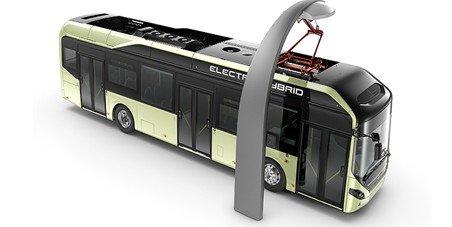
It’s common knowledge that getting people to use public transportation instead of driving cars will reduce carbon emissions. According to Transportation Nation, transit riders last year saved 4.7 billion gallons of gasoline. That adds up to 37 million metric tons of CO2 or 10 pounds of CO2 per ride.
Intercity buses, which are gaining in popularity, can potentially save even more. Using figures provided by Megabus, a completely full bus, which holds 77 passengers, emits 14 times less pollution per passenger than a typical automobile. Using those numbers, any bus with four or more passengers in it will emit less per passenger than a car.
The numbers for city transit buses, which are less efficient and are constantly starting and stopping, are not as good. According to the Department of Energy, city buses achieve an average of 31 passenger miles per gallon, which is less than a typical car carrying 1.55 passengers, and thereby achieving 39 passenger miles per gallon. That is, in part, due to the fact that a typical city bus is less than 25 percent full.
Clearly, getting more people to ride the bus regularly instead of driving cars is one way to curb carbon emissions. Another way is to make buses more efficient. On that note, there is some very good news to report.
Volvo just announced that its new 7900 Hybrid Electric Bus will be launched at the International IAA Commercial Vehicles show next week. The bus which, utilizes a 201 HP electric motor in conjunction with a lithium-ion battery, could be a game-changer. Because the bus can be run in silent, emission-free, all-electric mode for up to 4.3 miles at a time, that means the bus can be used indoors and out. This can positively impact air quality in bus stations and shelters which has been observed to be a problem, not to mention the air quality inside the buses themselves.
Three of these buses have successfully completed field tests in Gothenburg, Sweden over the past year, and eight more will be deployed in Stockholm this fall. Analysis of the routes shows that the buses will be able to run in all-electric mode 70 percent of the time. This results in the following performance milestones:
- 75 percent fuel saving
- 60 percent energy reduction
- 75 percent CO2 reduction
The bus can recharge its battery in only six minutes using an overhead power connector.
These buses should compare favorably with the Daimler buses, manufactured by Orion of Mississauga, Ontario, that have already become widespread across North America, with over 4,000 vehicles on the road. They claim a 30 percent improvement in fuel economy compared to conventional diesel buses. New York City, which at one point had 850 hybrid buses, has stopped purchasing them and has even retrofit some back to conventional diesel, citing high maintenance costs associated with the electric motors burning out. Hopefully, Volvo’s technology will be able to overcome that issue.
Hybrid-electric technology is well suited to applications like buses and garbage trucks that stop frequently, both because of the relatively high torque that electric motors provide at low speed and the regenerative braking that captures energy that would otherwise be lost as heat every time the vehicle stops.
Even though the new Volvo buses are small, with only 32 seats each, they don’t have to be full to be economical. The energy and fuel reductions mean that these buses can be expected to achieve far higher passenger miles per gallon than even high mileage hybrid cars, effectively raising the bar for fuel-efficient urban transportation. They will also help to improve air quality and reduce noise levels. If you want to be greener than riding this bus, you just might have to walk or ride a bike.
RP Siegel, PE, is an author, inventor and consultant. He has written for numerous publications ranging from Huffington Post to Mechanical Engineering. He and Roger Saillant co-wrote the successful eco-thriller Vapor Trails. RP, who is a regular contributor to Triple Pundit and Justmeans, sees it as his mission to help articulate and clarify the problems and challenges confronting our planet at this time, as well as the steadily emerging list of proposed solutions. His uniquely combined engineering and humanities background help to bring both global perspective and analytical detail to bear on the questions at hand.
Follow RP Siegel on Twitter.

RP Siegel (1952-2021), was an author and inventor who shined a powerful light on numerous environmental and technological topics. His work appeared in TriplePundit, GreenBiz, Justmeans, CSRWire, Sustainable Brands, Grist, Strategy+Business, Mechanical Engineering, Design News, PolicyInnovations, Social Earth, Environmental Science, 3BL Media, ThomasNet, Huffington Post, Eniday, and engineering.com among others . He was the co-author, with Roger Saillant, of Vapor Trails, an adventure novel that shows climate change from a human perspective. RP was a professional engineer - a prolific inventor with 53 patents and President of Rain Mountain LLC a an independent product development group. RP was the winner of the 2015 Abu Dhabi Sustainability Week blogging competition. RP passed away on September 30, 2021. We here at TriplePundit will always be grateful for his insight, wit and hard work.














